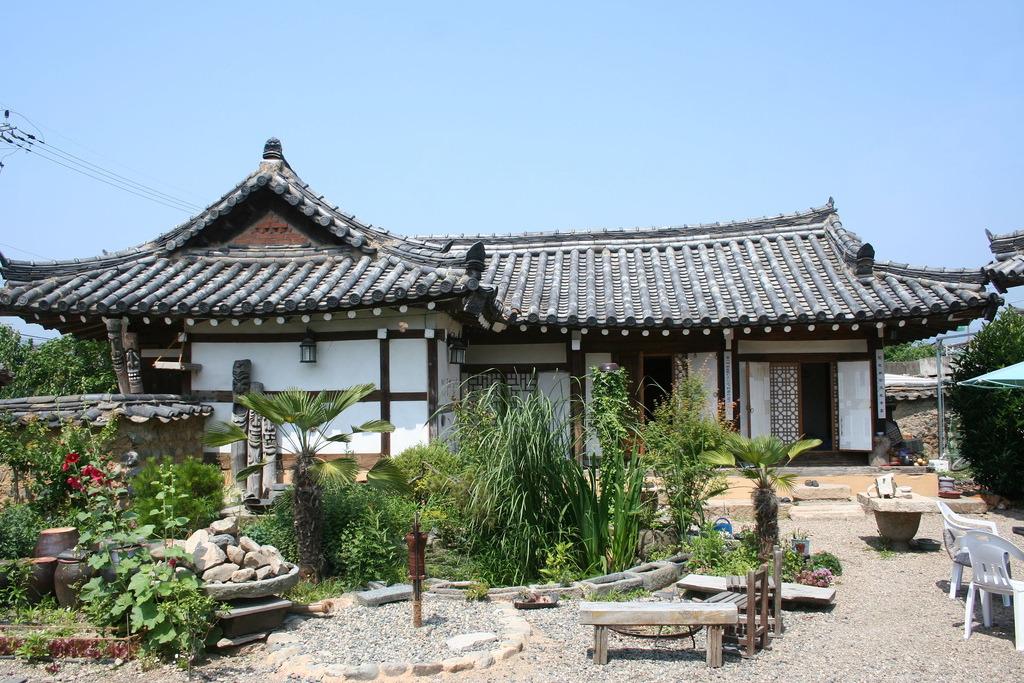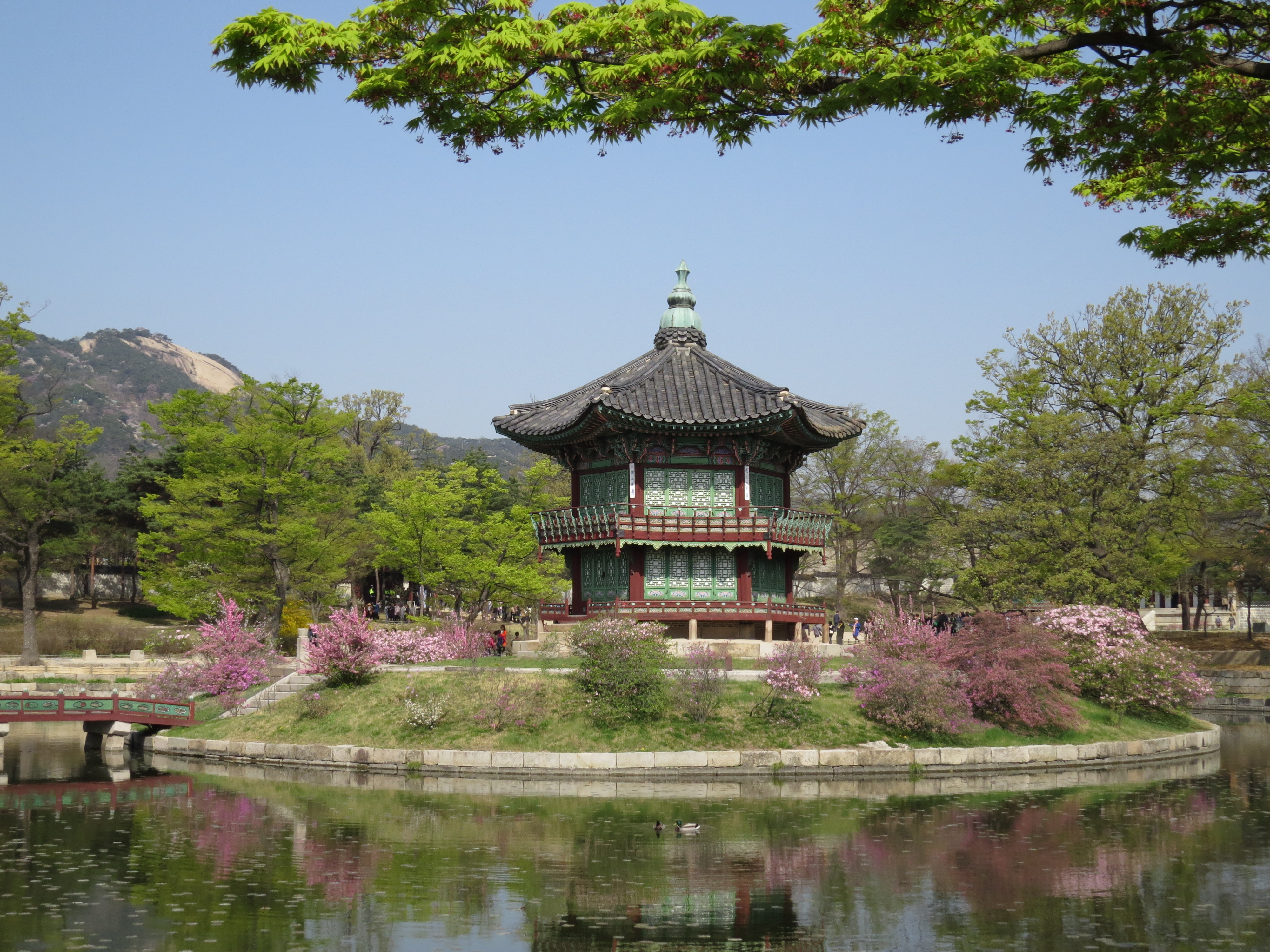1. Overview
Bae Hee-han (배희한Bae Hee-hanKorean; June 19, 1907 - November 5, 1997) was a distinguished South Korean master carpenter who specialized in building and repairing traditional Korean houses, known as hanok. His profound skill and dedication to his craft led to his designation in 1982 as a holder of Daemokjang (대목장DaemokjangKorean), the 74th Important Intangible Cultural Property of South Korea. Bae Hee-han is celebrated for his commitment to preserving the authentic spirit and techniques of Joseon-era carpentry, embodying the values of a true artisan who prioritized the integrity of his work over material wealth. His legacy is marked by numerous significant architectural works, including the iconic Donamjang house, and the training of future generations of master carpenters, ensuring the continuation of Korea's rich architectural heritage.
2. Life
Bae Hee-han's life was dedicated to the art of traditional Korean carpentry, marked by early apprenticeship, significant architectural contributions, and a humble character that defined his approach to his craft.
2.1. Early Life and Education
Bae Hee-han was born in Seoul on June 10, 1907. Although the family register indicates his birth year as 1909, 1907 is widely accepted. Despite coming from a relatively affluent family, his passion for carpentry led him to discontinue his studies at Seonrin Commercial High School in 1923, at the age of 17. He then began his apprenticeship under a Japanese carpenter named Oda, embarking on his journey into the world of traditional architecture.
2.2. Early Career and Apprenticeship
Even before formally quitting his studies, Bae Hee-han had already commenced work as a carpenter for the Railway Bureau of the Japanese Government-General of Korea in 1921. At the age of 18, he received crucial traditional carpentry lessons from Choi Won-shik (최원식Choi Won-sikKorean), a highly respected royal palace master carpenter, at the demolition site of Daejojeon Hall. This apprenticeship under Choi Won-shik, considered the last royal carpenter of the Joseon Dynasty, profoundly influenced Bae Hee-han's architectural style and earned him the moniker "the last Joseon carpenter." During this period, he constructed numerous residences for high-ranking officials, including the 사랑채SarangchaeKorean, a detached men's quarters, for Min Yeong-hwi's (민영휘Min Yeong-hwiKorean) house in Samcheong-dong. In 1939, at the age of 31, he undertook the construction of 돈암장DonamjangKorean, the residence of the former eunuch Song Seong-jin (송성진Song Seong-jinKorean), a house that later served as the home of Syngman Rhee for two years.

2.3. Major Activities and Designation as Daemokjang
After the liberation of Korea from Japanese colonial rule, Bae Hee-han's activities significantly expanded. In 1959, he was involved in the crucial repair work of 하향정HaejungjeongKorean and Hyangwonjeong Pavilion (향원정HyangwonjeongKorean) within Gyeongbokgung Palace. Following these notable restoration projects, he dedicated his skills to building numerous temple structures across the country. His contributions to traditional carpentry were formally recognized in December 1980 through the "Special Extended Exhibition of Woodworking" held at the National Folk Museum of Korea. This recognition culminated in his official designation in 1982 as the holder of Daemokjang, specifically as the 74th Important Intangible Cultural Property of South Korea, a testament to his mastery of traditional carpentry.

2.4. Later Life and Death
In his later years, Bae Hee-han continued his work, leaving an indelible mark on Korean architecture. He passed away on November 5, 1997, due to old age. Unlike some of his mentors and contemporaries, Bae Hee-han was known for his remarkably disciplined and humble character. He did not engage in fighting or consume alcohol, nor did he accumulate substantial wealth from his craft. He famously stated, "There is no original money coming to people who live off dead trees," a reflection of his profound philosophical approach to his profession-a dedication to the art itself rather than its material rewards.
3. Major Works and Architectural Style
Bae Hee-han's extensive portfolio of major works showcases his distinctive architectural style, characterized by a blend of simplicity, solidity, and meticulous craftsmanship.
3.1. Characteristics of His Architecture
Bae Hee-han is frequently referred to as "the last Joseon carpenter" because he was a disciple of Choi Won-sik, who served as the final royal carpenter of the Joseon Dynasty. This lineage firmly connected him to the traditional building methods and aesthetic principles of the Joseon period. Painter Kim Byeong-jong (김병종Kim Byeong-jongKorean) meticulously evaluated Bae Hee-han's architectural style, describing it as "simple but solid and thorough." This evaluation highlights the core tenets of Bae Hee-han's approach: functional simplicity combined with robust construction and an unwavering attention to detail that ensured the longevity and aesthetic integrity of his structures. His work stands as a testament to the enduring beauty and structural resilience of traditional Korean architecture.
3.2. List of Representative Works
Bae Hee-han's prolific career resulted in numerous significant architectural projects, both new constructions and meticulous repairs of existing structures. His representative works include:
- 1927: Kim Ik-bae Brothers House
- 1935: Kim Jae-eun's house
- 1936: Old Yuseong Villa
- 1939: Donamjang (Song Seong-jin's house)
- 1940: Choi Gi-tae's house
- 1942: Choi Chang-hak House
- 1966: Yeomburam in Gwacheon, Gyeonggi-do
- 1967: Long Temple in Seongbuk-dong, Seoul
- 1969: Guamsa Temple in Bongcheon-dong
- 1974: Naval Academy Patriotic History
- 1976: Seo Se-ok House
4. Assessment and Legacy
Bae Hee-han's influence extends beyond his direct architectural achievements, encompassing the training of new generations and embodying a profound spirit of craftsmanship.
4.1. Training of Disciples
A significant aspect of Bae Hee-han's legacy is the transmission of his invaluable carpentry skills to future generations. Among his most prominent disciples was Go Taek-young (고택영Go Taek-youngKorean), who rigorously learned the intricate techniques of traditional carpentry from him. Go Taek-young himself was later designated as a master builder in 1997, becoming a holder of Daemokjang (대목장DaemokjangKorean), thus continuing the lineage of this important cultural property. Through disciples like Go Taek-young, Bae Hee-han's profound knowledge and artisanal methods have been preserved and continue to contribute to the revitalization and perpetuation of traditional Korean architecture.
4.2. Artistic Assessment and Spirit
Bae Hee-han's career represents a pivotal period in the history of traditional Korean architecture, bridging the past and present. His mastery of the Daemokjang craft, combined with his unwavering dedication and humble disposition, earned him immense respect. He was not merely a builder but a guardian of traditional techniques and an embodiment of the true craftsman's spirit, prioritizing the quality and authenticity of his work above all else. His refusal to chase wealth or succumb to common vices, as noted in his personal philosophy, underscores his profound commitment to his art. His architectural works, characterized by their simplicity, solidity, and thoroughness, stand as enduring testaments to his unique artistic vision and his role in preserving a vital aspect of Korea's cultural heritage for future generations.